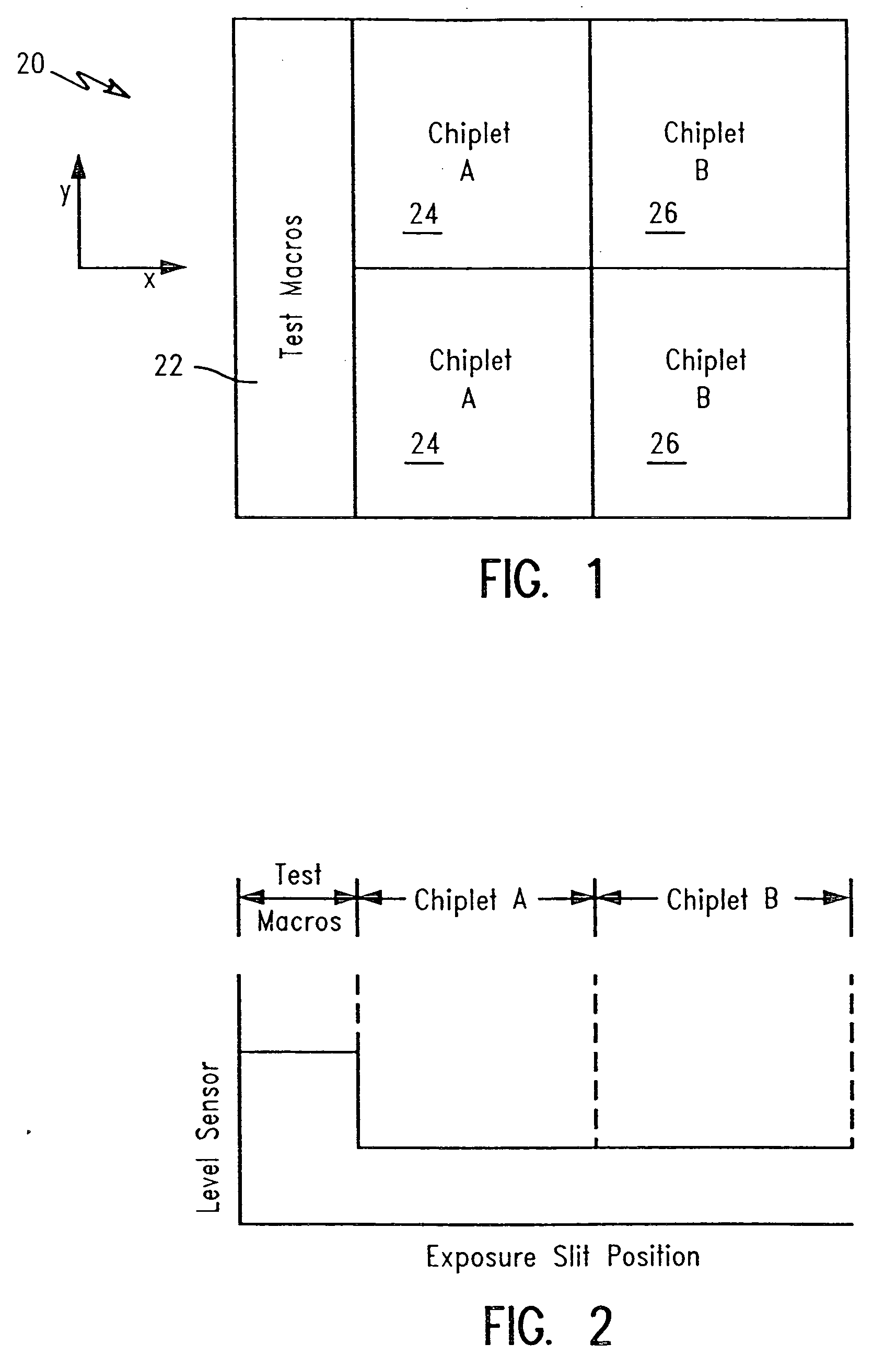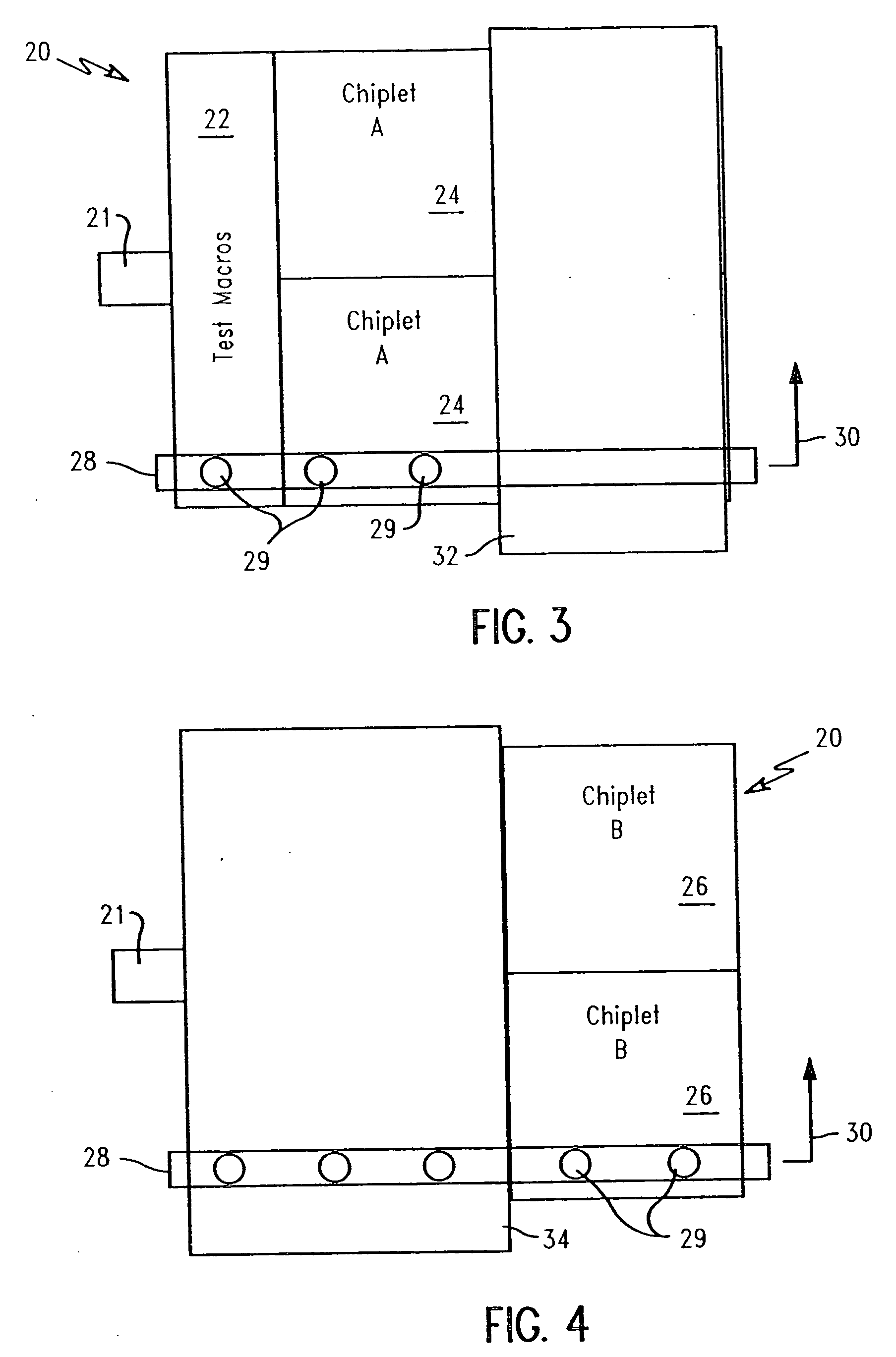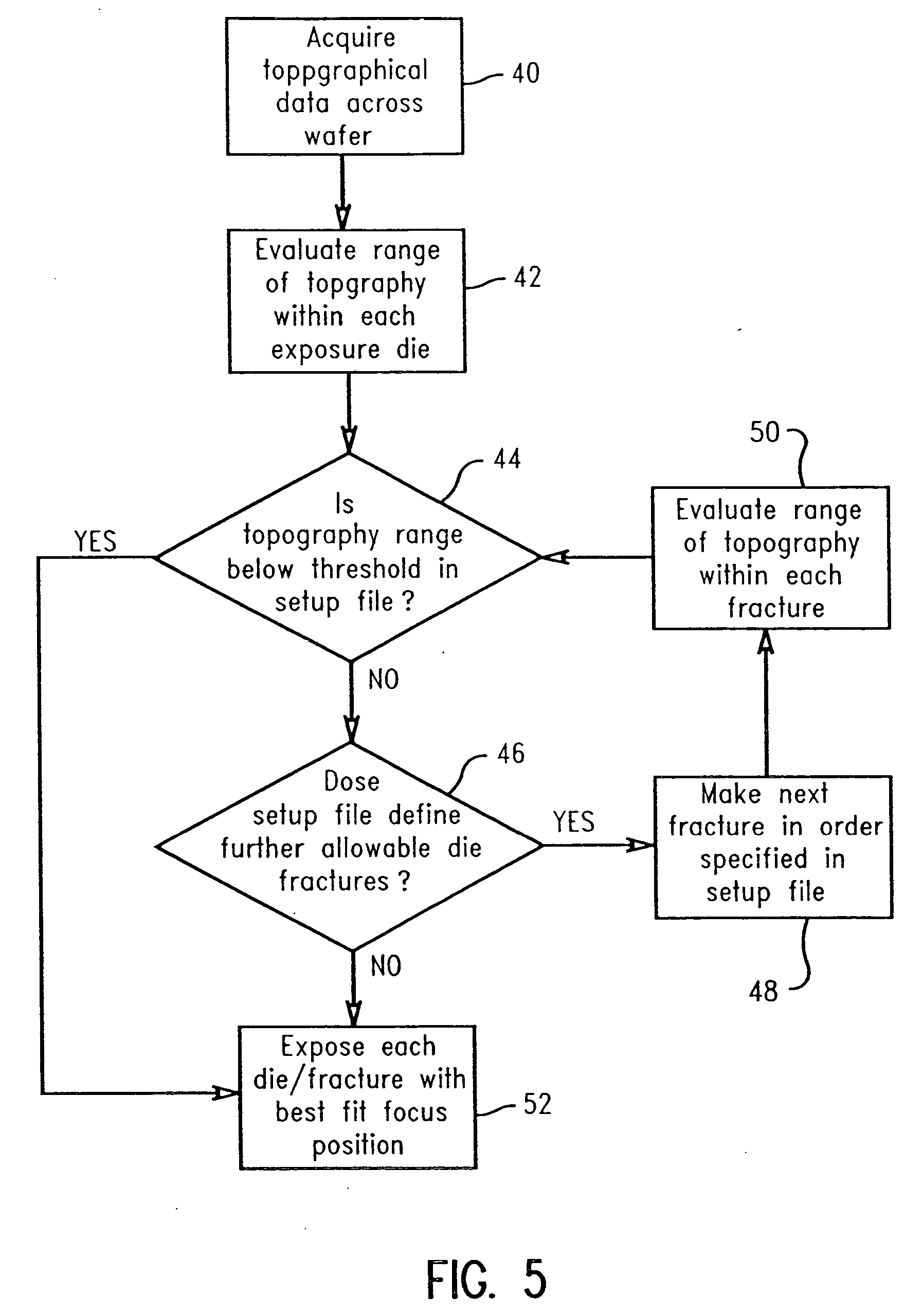Automated sub-field blading for leveling optimization in lithography exposure tool
- Summary
- Abstract
- Description
- Claims
- Application Information
AI Technical Summary
Benefits of technology
Problems solved by technology
Method used
Image
Examples
Embodiment Construction
)
[0040] In describing the preferred embodiment of the present invention, reference will be made herein to FIGS. 1-6 of the drawings in which like numerals refer to like features of the invention.
[0041] The present invention divides or fractures portions of the wafer, also know as chiplets, into different scanning regions based on topographical data, and then incorporates potential chiplet fracturing in the reticle design and provides the exposure system with detailed information regarding these potential fracture points. With this information, the exposure tool can monitor and compensate the step height differences induced by variations in different areas of the wafer, e.g., from one customer part to another, or between test macros and product chips. In cases where significant topography variation is detected and exceeds the predetermined process DOF, the method of the present invention breaks the die down based on the predetermined fracture points and uses the exposure tool scanne...
PUM
 Login to view more
Login to view more Abstract
Description
Claims
Application Information
 Login to view more
Login to view more - R&D Engineer
- R&D Manager
- IP Professional
- Industry Leading Data Capabilities
- Powerful AI technology
- Patent DNA Extraction
Browse by: Latest US Patents, China's latest patents, Technical Efficacy Thesaurus, Application Domain, Technology Topic.
© 2024 PatSnap. All rights reserved.Legal|Privacy policy|Modern Slavery Act Transparency Statement|Sitemap



